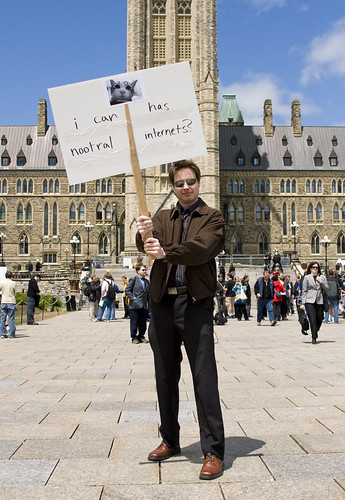Barack Obama has just been announced the winner of the 2008 US Election. This is an incredibly important day for the United States, and an even more pivotal time in US race-relations. Coincidentally, today was also an important day for my family. It was today that we received a letter from the Government of Canada with two distinct identification cards. The contents of the envelope will forever shape the identities and destinies of my children. The letter reads:
Enclosed is your Certificate of Indian Status (CIS) card. This card identifies you as an Indian within the meaning of the Indian Act and thus entitles you to certain benefits.

See, while my own heritage is Greek, my wife is of Ojibwa descent. More important, from the perspective of our government, she is classified as a “Status Indian” and thus listed in the Indian Register. The Register would include the information that she is also a “Treaty 4 Indian” whose ancestors signed an agreement for certain rights in the exchange for rights to land; a huge mass of territory that spread from southeastern Alberta, through southern Saskatchewan, to western Manitoba. So, for those interested in why this is important, bear with me. But first I want to explain how this all works. It’s a game of numbers, a system that was borne of assimilationist policies.
When treaties were signed between the Europeans and First Nations, in some cases, the duration of the agreement was expressed with the phrase “as long the sun shines, the rivers flow, and the grass grows.” Yet, the system was set up intentionally to assimilate First Nations people into a subset of the colonial culture so that these individuals would eventually lose this status. For instance, had I married my wife prior to 1985, she would have lost her status for marrying a non-status man. Other ways of losing status included: (i) enfranchisement (until 1960, an Indian could vote in federal elections only by renouncing Indian status), (ii) having a mother and paternal grandmother who did not have status before marriage (these people lost status at 21), and (iii) being born out of wedlock of a mother with status and a father without. (Source)
Since 1985, the process of losing status has changed. This is how it works. See if you can follow along:
1985: Amended to allow First Nations women the right to keep or regain their status even after “marrying out”, and to grant status to the children (but not grandchildren) of such a marriage. This amendment was debated in Parliament as Bill C-31. Under this amendment, full status Indians are referred to as 6-1. A child of a marriage between a status (6-1) person and a non-status person would qualify for 6-2 (half) status, but if his/her child in turn married another 6-2 or a non-status person, the child will be non-status. If a 6-2 marries a 6-1 or another 6-2, their children will revert to 6-1 status. Blood quantum is disregarded, or rather, replaced with a “two generation cut-off clause”. According to Thomas King, around half of status Indians are currently marrying non-status people, meaning this legislation will accomplish complete legal assimilation in a matter of a few generations.
So, in this case, my children are 6-2s. If either of them have children with a 6-1 or 6-2, their children will revert to 6-1 status. If they do not, their treaty status is lost forever. And as you can read above, the system is set up to fulfill a complete legal assimilation, where the promises of the treaty no longer need to be fulfilled.
So, I looked back at this brief line on the letter that we received today regarding these “certain benefits”. First, these must be understood as much more than just “benefits”. What the Treaties promised were in fact literal “rights and freedoms”, many of which have continued to decay over the course of generations. Second, it is important to understand that being a First Nations individual in Canada has all sorts of hidden “benefits”. How about systemic racism? The highest suicide rate among young people in Canada? The shared history of genocide of an entire people and culture? As someone who has served over a decade with First Nations education, I have witnessed how these hardships and atrocities continue to affect First Nations communities.
So I wonder about the future of my children as they navigate through life with these complex cultural and political identities. My children have been born into privilege, into above average socio-economic status. At the same time, their destinies will be forever linked with racial, legal, and social definitions of their heritage. How will they be treated in their classrooms by other students? How will teachers view my children as learners? Most importantly, how will my children negotiate these complex social perceptions and craft identities that are uniquely their own?
My wife and I hope that our children will learn about and embrace the cultures of their grandparents. The languages, dances, music, traditions, and rituals of both these cultures are rich and wonderful. Someday, I hope to take my son and daughter to Greece, to explore the land of my mother and father. As for the lands of their First Nations’ ancestors, we live on that very land, but these ‘nations’ and these once proud people no longer exist as before. My children need to understand why this is so, and why such crimes against humanity must never happen again.


